The Best Things to Do in Madagascar

Last updated on December 5th, 2024 at 05:38 pm
I recently had a comment on one of my Madagascar blogs, it was kind of rude, but also gave me the push to write this post! So this one’s for you ‘John’.
I’ve been to Madagascar a couple of times now, and I’m heading back for a month next year! It’s an incredible country, with plenty of culture, amazing wildlife, unique plant life, and diverse ecosystems – so there’s always plenty to do and there are some things you can’t see or do anywhere else in the world! Yes, Madagascar is truly special.
So here are some ideas for places to see and things to do in Madagascar, but just be aware, it’s a huge country, so when planning a trip, you either need a lot of time (to explore everywhere I list here, you need around, at least, 6 weeks) or best to focus on a few key activities or areas and build your trip around those.
PS. Did you know that I organise Madagascar group trips? Click here for details.
Please Note: Some of the links in this post are affiliate links, which will earn me a small commission at no extra cost to you. Affiliate sales help with the running costs of this site, so thank you for your support!
The Best Things to Do in Madagascar

Visit the Avenue of the Baobabs
One of the most iconic things to do in Madagascar is to visit the very photogenic ‘Avenue of the Baobabs’ which is conveniently located near to the town of Morondava in the west of the country.
The best time to visit is generally around sunset and sunrise, when the light is just right! It does get very busy (especially around sunset) so you need to be very lucky or patient to get photos with no-one else in., especially if you go at the more popular times.
I was lucky enough to capture this shot as we drove through in the late morning on our way to a local village. The light wasn’t ideal, but there were no other tourists around, so we managed to get a few good pictures!
Also, Morondava is also a great place to visit in itself and easily accessible by plane from Antananarivo.

Visit a Vezo Village
If you’ve read my blog, you’ll know that I love the cultural side of travel just as much as the landscapes and wildlife. One of the highlights of my trip was spending a day in a Vezo village. The Vezo people are a semi-nomadic tribe living along the southern coast of Madagascar, and the word ‘vezo’ literally means ‘to live with the sea.’
We spent the day with the tribe, dancing, listening to local music, visiting a traditional Malagasy healer, getting our faces painted in the traditional Malagasy style (Masonjaony) and eating delicious Malagasy food.

Travel Down the Tsiribihina River by Boat
If you are looking for an incredible and very local type of experience in Madagascar, then what could be better than taking a multi-day trip down the Tsiribihina River, camping along the river bank, spending evenings around the fire and meeting the local people?
The trip usually takes 3 days, 2 nights (by motorised boat – longer if canoeing) and there are waterfalls, natural pools, tobacco plantations and lemurs to see along the way!
My friend (and fellow guide) Laura did this last year and said it was AMAZING, so I’ve added it into the Rock My Madagascar Adventure (West & North), so me and a few adventurous souls will be doing this very trip soon – you can join us!
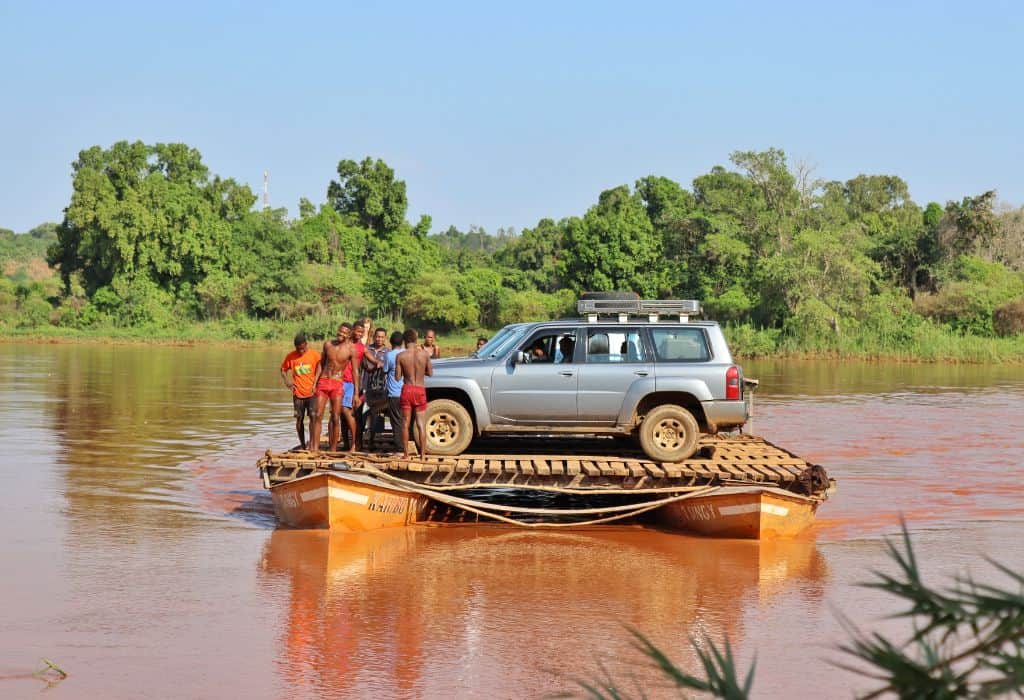
Explore the Tsingy De Bemaraha National Park
One of the most unique experiences in Madagascar is visiting Tsingy de Bemaraha National Park, a UNESCO World Heritage Site known for its incredible razor-sharp rock formations, found only in Madagascar. The word “tsingy” translates to “walking on tiptoes” or “place where you can’t walk barefoot,” which perfectly describes the rugged terrain.
The journey to the park is an adventure in itself, involving a bumpy ride along Madagascar’s notorious secondary roads and crossing rivers on small car rafts — the perfect ‘Type 2’ fun experience for adventurous travellers.
Most people stay in Bekopaka and travel the 1 hour or so to visit the Grand Tsingy. The park is only accessible in the dry season. You can also explore the nearby Petit Tsingy and the dramatic Gorges of the Manambolo River.

Visit the Kirindy Forest Reserve
Between Bekopaka and Morondava is the Kirindy Forest Reserve, which is home to a wide variety of plant and animal life, including eight lemur species, such as the famous Verreaux’s sifaka and the red-fronted brown lemur. You can also spot the narrow-striped mongoose, the giant jumping rat (my friend had one in her room – ha ha) , and Berthe’s mouse lemur, the smallest primate in the world.
One of the most famous creatures in Kirindy is the fossa (said like “foosa”), Madagascar’s largest predator, which many people will recognise from the movie Madagascar. These elusive animals are more frequently seen here than in other parts of the island, especially during their mating season from October to November.

Visit the Islands Around Nosy Be
A must-do in Northern Madagascar is to visit the island of Nosy Be and the surrounding smaller islands. This area of Madagascar is both beautiful and teeming with wildlife.
Nosy Be is the main island, where you’ll find an international airport. Nosy Be has so many activities on offer and is a great place to base yourself for some of the activities the islands are famous for – visiting the Lokobe National Park and swimming with whale sharks, dolphins and seeing humpback whales.
The whale sharks generally visit the islands between September and December and the humpback whales between August and November.
Nosy Be is lively, much busier and built up than the other islands. And whilst it is beautiful and easy to get to, I didn’t like the Nosy Be nightlife. Much of the crowd seemed to be made up of (old) European men and (very young) Malagasy women (or girls). Take from that what you will – I think that needs a separate post!

Nosy Komba (aka Nosy Ambariovato or ‘Lemur Island’) is a wonderful little island, covered in rainforest. We stayed on the north of the island, near to the village of Ampangorinana, where you’ll find the Lemur Park. Black lemurs are highly protected on the island and very used to humans.
Nosy Iranja, is known locally as ‘Turtle Island’. It encompasses two main islands that are connected by a white sandbank, which is visible at low tide. It’s very common to see hawksbill and green turtles swimming in the waters around the island (which we did).
Nosy Tanikely is a tiny island but with incredible snorkelling, right off the beach! We saw tons of fish, and turtles. Nosy Sakatia (where we stay on the RMA tour) is very near to Nosy Be, but much quieter. The island has no roads and is where you’ll find the Ambohibe Turtle Reserve.
Then a bit further away is Nosy Ankazoberavina, a nature reserve with a great eco-lodge. It is a marine park and breeding ground for green and hawksbill turtles, and has resident black lemurs.

Hear the Indris Cry in Andasibe-Mantadia National Park
A trip to Madagascar would not be complete without a visit to one its rainforests. And one of the best is Andasibe-Mantadia National Park, which has 11 species of lemur, including the indri, Madagascar’s biggest lemur species, whose haunting calls echo around the forest.
The park is made up of Mantadia National Park and Analamazoatra Reserve (also known as Andasibe – named after the village). It’s also close to the Mitsinjo Reserve, where David Attenborough observed and filmed the indris, and Lemur Island, a lemur sanctuary where you can get up close to a variety of lemurs.

Explore the Capital Antananrivo
Unless you are flying into Nosy Be and just exploring the the north of the country, you’ll likely need to spend some time in Madagascar’s capital Antananarivo.
Antananarivo, or ‘Tana’ for short is a great place to get acquainted with the interesting and very unique Malagasy culture. Some of the activities to do there include a chocolate making workshop, the famous Lemurs’ Park or a taking a Malagasy cooking class with Tana Kitchen.
Doing a tour of the city is also a good option. You can visit places like the Photographic Museum, the Queen’s Palace and Analakely Market. For souvenirs, there’s no better place than Andravoahangy Market on Route Digue. There are also plenty of good restaurants too, so you can get your cheese fix!

Explore the Towns of Antsirabe, Ambositra and Fianarantsoa
Whilst a lot of the best things to do in Madagascar centre around nature and wildlife, the towns are also very interesting too! I really enjoyed exploring Antsirabe, Ambositra and Fianarantsoa.
Antsirabe is a great place for trying a pousee-pousse (rickshaw) ride, visiting local markets and hiking around beautiful Lake Tritriva. Ambositra is full of wonderful woodcarving artisans and Fianarantsoa is a picturesque hillside city, renowned for its historic churches, traditional houses, and vibrant vineyards.

Visit Ranomafana National Park
One of my favourite places to visit in Madagascar, was the town of Ranomafana. In Malagasy, ‘ranomafana’ means ‘hot water’, due to the number of hot springs in the area. The town lies next to Ranomafana National Park, a beautiful rainforest which is home to 12 species of lemur.
The town has a great feel to it, and running through it is the Andranaroa River, a shallow, natural lazy river that if perfect for canoeing. We had a hilarious trip down the river – let’s just say the rafts aren’t the best and the river is very shallow.
And let’s not forget the local hot springs and the nearby vanilla plantation.
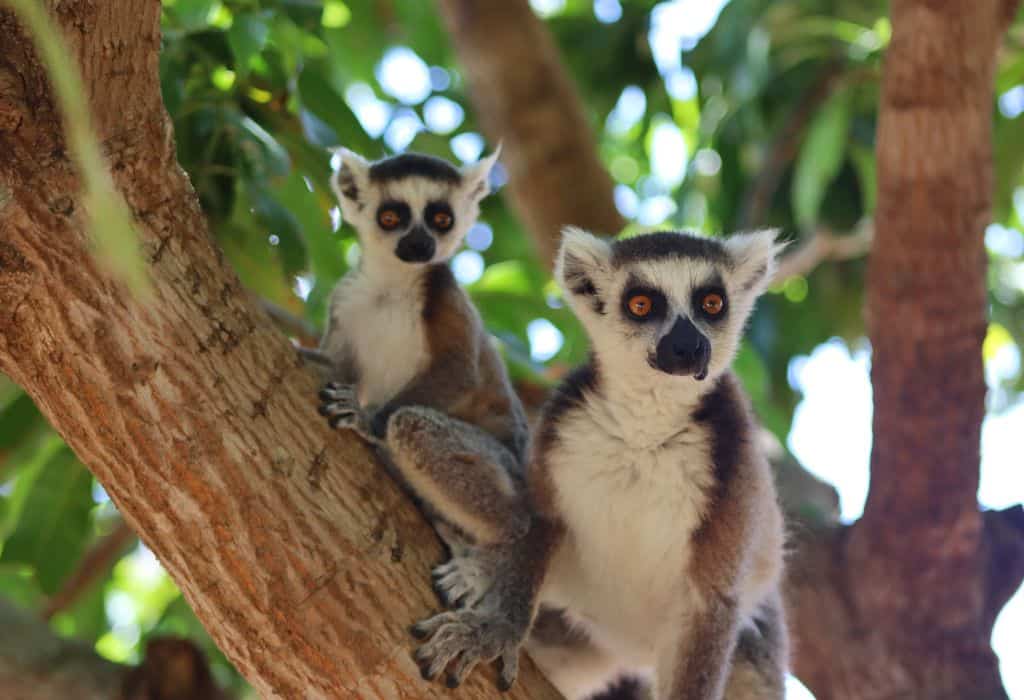
See King Julien at Anja Reserve
One of my absolute highlights of Madagascar was seeing it’s most famous residents – the ring-tailed lemurs.
You can see them in a few places, including Lemurs’ Park in Antananarivo or Lemur Island in Andasibe, but my favourite was seeing them at Anja Community Reserve, which lies south of Antananarivo! It’s a community-managed wildlife reserve in Madagascar’s central highlands.
The park itself is quite beautiful, with stunning granite mountains – it reminds me a bit of Spitzkoppe in Namibia – but with ring-tailed lemurs running about the place. The lemurs are habituated, so they’re not scared of humans, meaning you can get quite close to them.
The park is a great place for hiking too, with plenty of trails and gorgeous scenery! Plus it’s easy to get to, lying just off the RN7 road.

Go Hiking in Isalo National Park
One of mine and my groups favourite places in Madagascar was Isalo National Park. There are several hiking options available, allowing you to choose between longer or shorter hikes based on your preferences and fitness.
Along the way there are plenty of beautiful views to take in, natural pools for wild swimming and you may even spot some lemurs if you’re lucky! I would also book yourself a hotel with a pool to cool off in after your hike!
I would also suggest visiting Window Rock!

Visit the Small Fishing Village Anakao
One of the places I loved on my first visit to Madagascar was the small fishing village of Anakao, which is easily reached by boat from the town of Toliara (aka Tulear). I didn’t love Toliara, but Anakao was beautiful, quiet and peaceful. The sunrise swims here were some of the best I’ve ever done!
There’s not a lot to do in Anakao itself, apart from relax, swim, snorkel, go whale watching (in season) and take boat trips (the nearby island of Nosy Ve is a great place to spot red-tailed tropicbirds) but that’s just what you want after a long trip through Madagascar!
We stayed at a great place called Peter Pan. The Italian owner, Dario, is a real character!

Visit the Villages of Ifaty
Ifaty, located just north of Toliara, consists of the fishing villages of Mangily and Madio Rano. It is one of the top spots in Madagascar for humpback whale watching, especially between June and September, with the peak season occurring in July and August.
This stunning region of Madagascar features pristine white sandy beaches lined with palm trees along the Mozambique Channel.

See the Amazing Rock Formations of the Red Tsingy
If you’re visiting northern Madagascar, a cool thing to do is to visit the Red Tsingy (or Tsingy Rouge). This is a natural and unusual rock formation made up of red laterite, which has been shaped by the elements.
Prepare to spend a (hot) hour and a half or so walking through the park, which is located near to Amber Mountain National Park, the town of Joffreville and very close to the village of Sadjoavato.

Visit the Northern Port City of Antsiranana
Another interesting thing to do in Madagascar is to visit the port city of Antsiranana, which is also called Diego Suarez, after two Portuguese explorers (Diego and Suarez) who were the first Europeans to ‘discover’ the Big Island in 1500.
The city is located in the far north of the country and is a good place to fly to (from Tana) if you’re planning to explore the northern region.
As well as exploring the city, I recommend visiting the Three Bays (Sakalava Bay, Pigeons Bay, and Dunes Bay), the Emerald Sea and Ramena Beach. We stayed both in the city and at an cool lodge just outside, called Jungle Park.
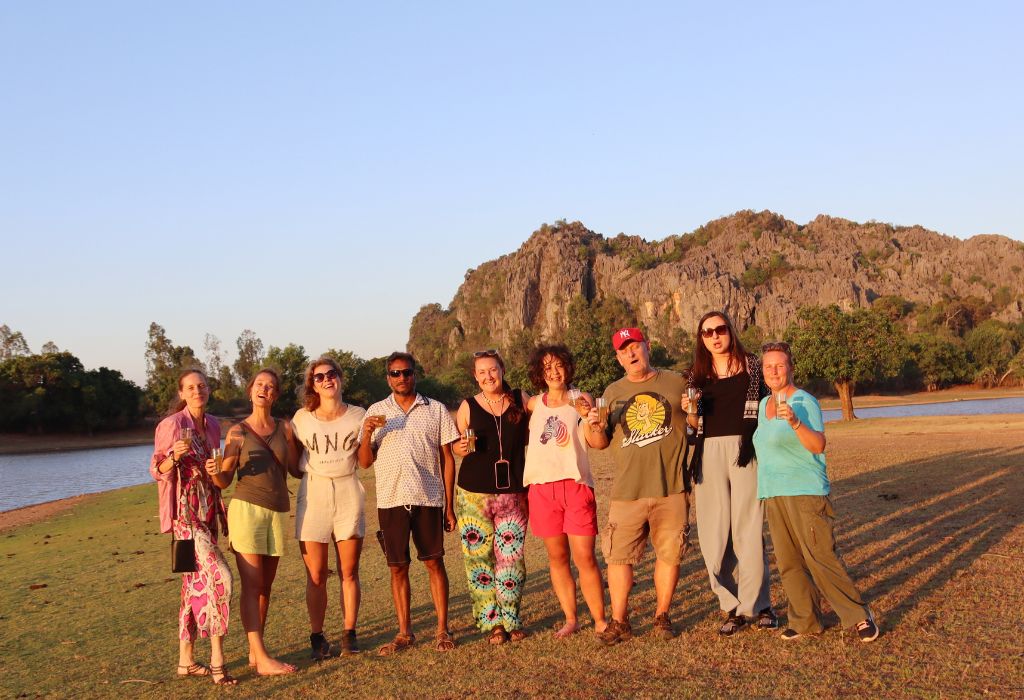
Ankarana Special Reserve
One of my favourite stops in northern Madagascar was the Ankarana Special Reserve. Ankarana is one of the most accessible limestone Tsingy regions in Madagascar and known for having great hiking routes. Amongst the Tsingy you’ll find lemurs, gorges and rivers, as well as Africa’s largest interconnected cave network.
We stayed in a wonderful luxury, but very rustic lodge called Iharana Bush Camp, which was right on a lake. One of my most fun memories was taking a boat trip at sunset, followed by sundowner drinks, dancing and music. They also had mozzarella on the menu, which is also a big plus in my eyes.
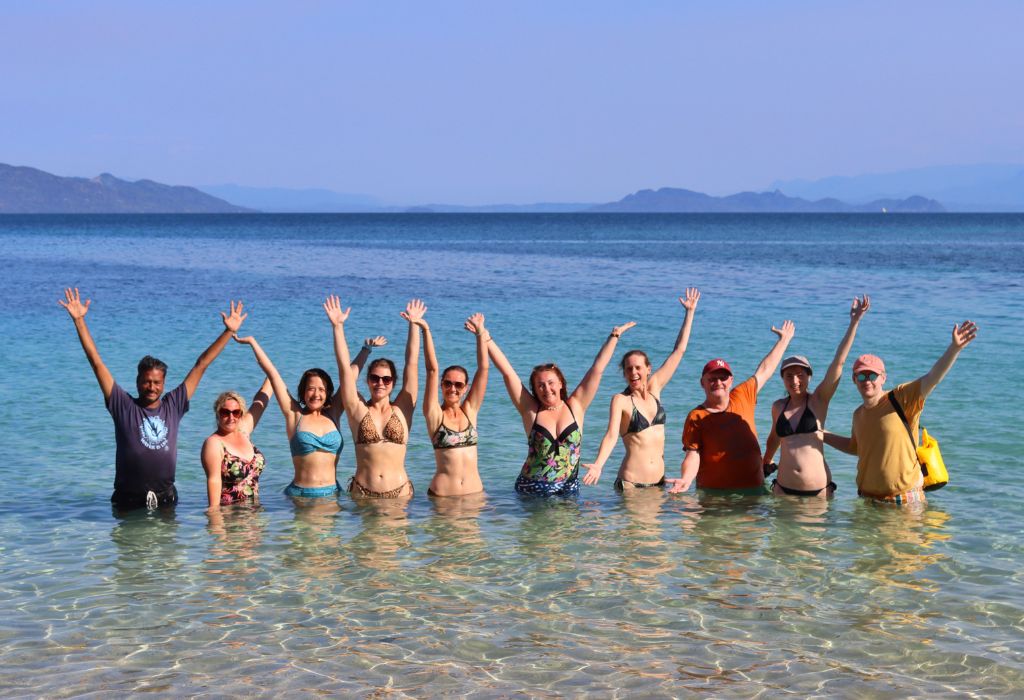
Relax on the Beaches of Nosy Boraha aka Île Sainte-Marie
Unlike all of the other places I’ve mentioned, I haven’t been here personally, however I’ll include it as everybody I know who has been, raves about this lovely, untouched island.
I’ve heard it’s a real paradise and its also one of the best places in Madagascar to see the humpback whales who migrate to the warm waters of the Indian Ocean between June and September.
There’s also beautiful beaches and bays, a pirate graveyard, diving, kitesurfing and other smaller islands to explore nearby.

Sample the Local Food
The food in Madagascar is pretty good overall, with a fusion of African, Asian and European cuisines. I particularly loved the street food – especially bonbon coco and these deep friend potato and (I think) spring onion balls! Rice is always on the menu, I’m not a big rice fan, but I did eat a lot of it!
One thing you will see everywhere, is zebu. Zebu is the cattle that they have in Madagascar and they are integral to Malagasy life. The cows are used for transport, dowries, wealth and food (milk, generally and meat on special occasions). If you find a good zebu steak, it’s delicious, but can also be quite tough if overcooked.
Other Madagascar posts you might enjoy…
- The Best Time to Visit Madagascar
- Things to Know Before You Visit Madagascar
- Madagascar Travel Guide
- From Africa, With Love – Postcards from Madagascar
- My Top 12 Best African Countries to Visit
- The Safest Places in Africa
If you would like to join one of my Madagascar group trips click here for details.
I hope this gives you some ideas for things to do in Madagascar! Any more suggestions? Leave them in the comments below!
Pin This Post For Later
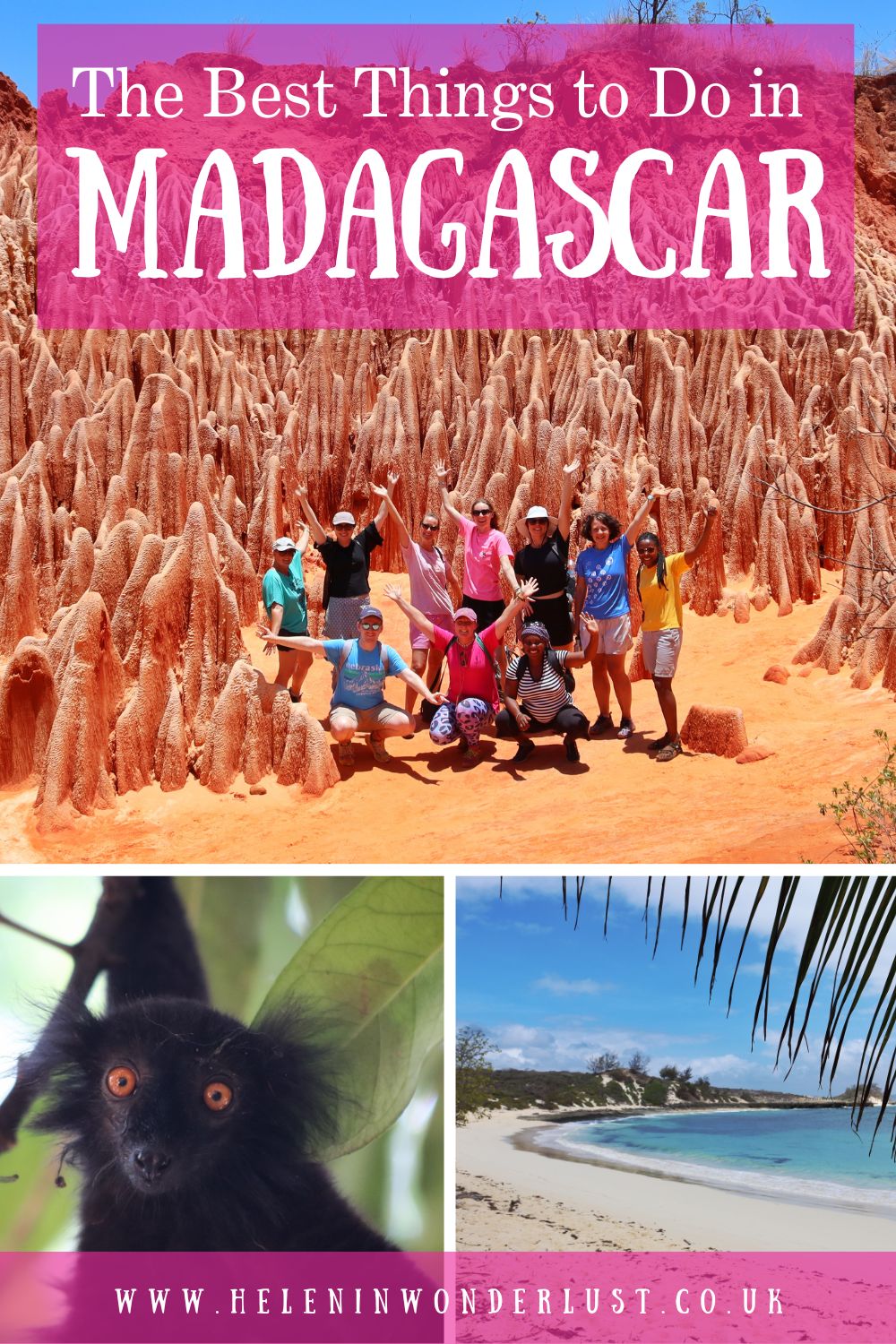


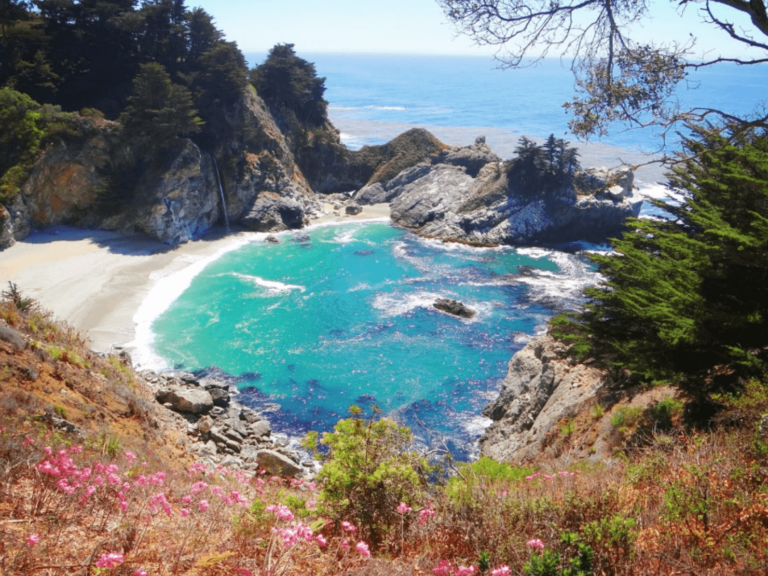


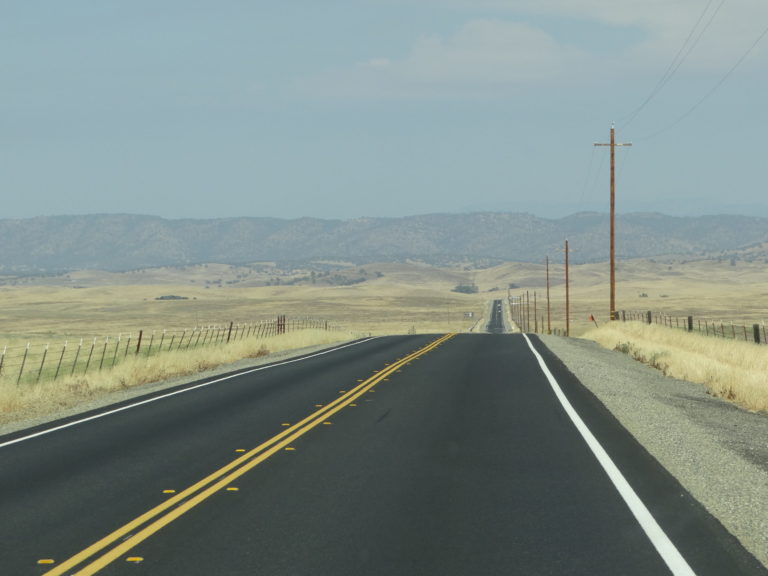


Found your travel blog about Madagascar really interesting ! Have been traveling the world of and on since 1970 ( 72 years old now) Spent some years in India and S E Asia but I’ve never been to anywhere in Africa or nearby…..For some years have been thinking of traveling to Madagascar….haven’t seen the cartoon ( will search for a copy in my local op shops DVD collections ) All I can think of that attracts me to the place is my inner pirate…the wonderful blues that you find in Labradorite when polished and the vastly different landscapes of the place….Been living in Tasmania for years now and am very concerned with deforestation of the planet but fight my battles at home , not in other people’s countries….Looking forward to meeting the people of Madagascar….thankyou for your article….
Hope you have a great trip to Madagascar Peter!